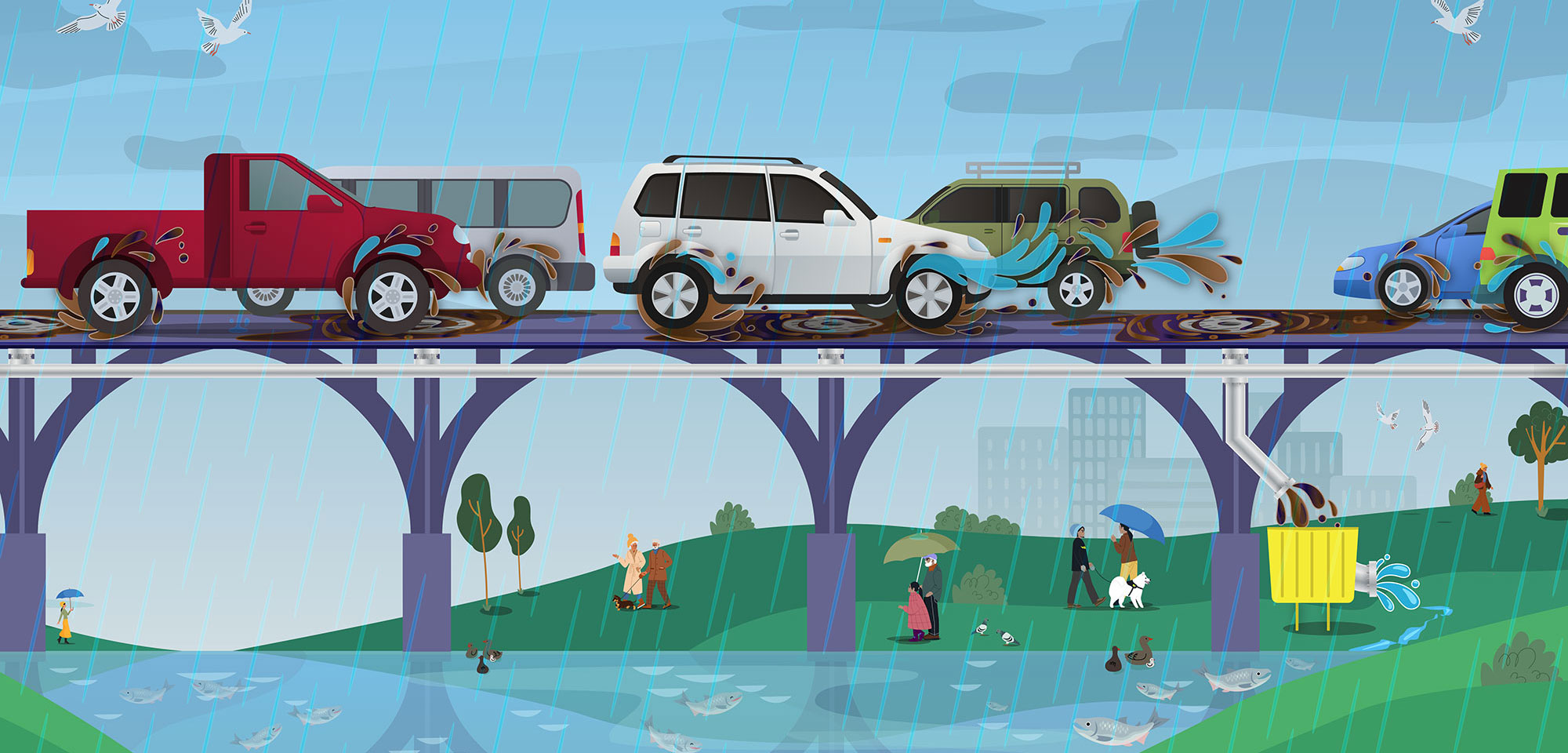The Nature Conservancy collaborated with the Washington State Department of Transportation and Stewardship Partners to reduce the environmental impact of stormwater runoff by installing smarter stormwater infrastructure.
Impacts of Roadway Stormwater
Vehicles traveling on roadways are a major of source of pollution, adding toxic chemicals to stormwater that threatens iconic wildlife like coho salmon.
Rainwater on bridges drain down vertical pipes that function like downspouts from a house’s roof gutters into water bodies or storm sewers.
Filtering Stormwater
Through the Adopt-a-Downspout program, The Nature Conservancy and its Brightstorm program helped install aboveground stormwater biofiltration planter boxes at the bottom of downspouts on the I-5 Ship-Canal Bridge in Seattle. With nearly 200,000 cars passing over the bridge daily, its contribution to pollution is significant. Each box, also referred to as a Box of Rain, filters pollutants from the runoff before it flows into the water below.
Key Project Takeaways
Early monitoring data shows that the Boxes successfully reduced the amount of harmful pollutants in stormwater significantly, including 6PPD-quinone, which is toxic to coho salmon.



